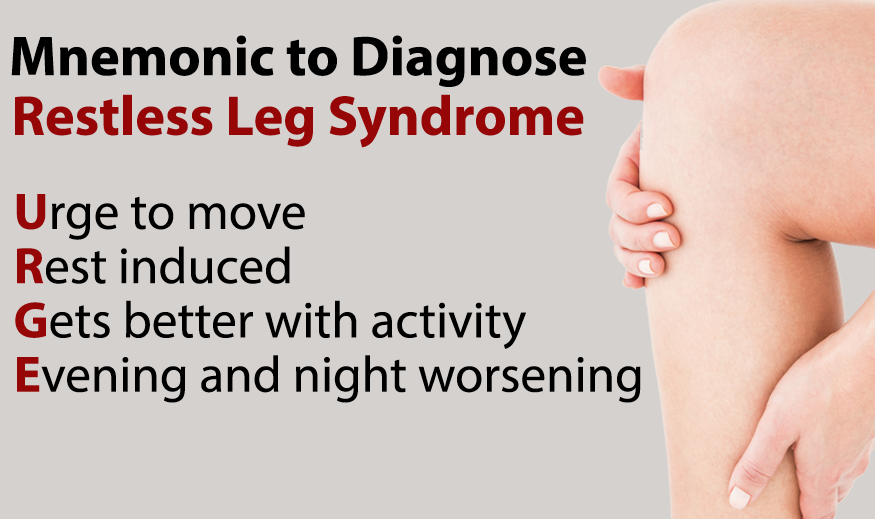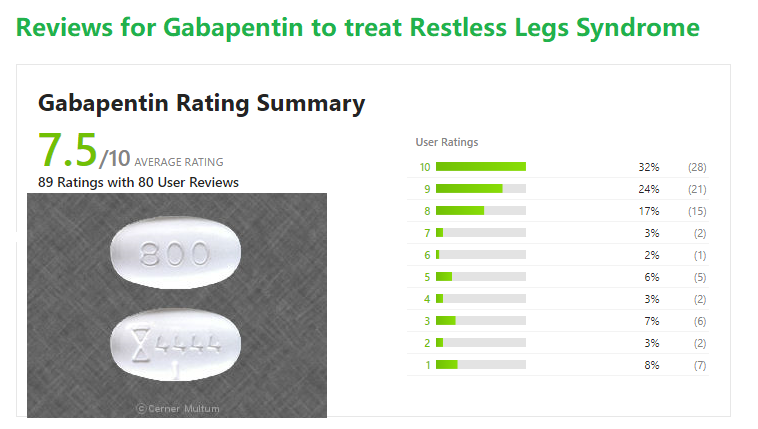Restless legs syndrome (RLS) is a disorder of the part of thenervous system that causes an urge to move the legs. Because it usually interferes with sleep, it also is considered a sleep disorder.
Causes of Restless Legs Syndrome
 In most cases, doctors do not know the cause of restless legs syndrome; however, they suspect that genes play a role. Nearly half of people with RLS also have a family member with the condition.
In most cases, doctors do not know the cause of restless legs syndrome; however, they suspect that genes play a role. Nearly half of people with RLS also have a family member with the condition.
Other factors associated with the development or worsening of restless legs syndrome include:
- Chronic diseases. Certain chronic diseases and medical conditions, including iron deficiency, Parkinson’s disease, kidney failure,diabetes, and peripheral neuropathy often include symptoms of RLS. Treating these conditions often gives some relief from RLS symptoms.
- Medications. Some types of medications, including antinausea drugs, antipsychotic drugs, some antidepressants, and cold and allergymedications containing sedating antihistamines, may worsen symptoms.
- Pregnancy. Some women experience RLS during pregnancy, especially in the last trimester. Symptoms usually go away within a month after delivery.
Other factors, including alcohol use and sleep deprivation, may trigger symptoms or make them worse. Improving sleep or eliminating alcohol use in these cases may relieve symptoms.
Treatment for Restless Legs Syndrome
Treatment for RLS is targeted at easing symptoms. In people with mild to moderate restless legs syndrome, lifestyle changes, such as beginning a regular exercise program, establishing regular sleep patterns, and eliminating or decreasing the use of caffeine, alcohol, and tobacco, may be helpful. Treatment of an RLS-associated condition also may provide relief of symptoms.
Other non-drug RLS treatments may include:
Leg massages
Hot baths or heating pads or ice packs applied to the legs
Good sleep habits
A vibrating pad called Relaxis
Medications may be helpful as RLS treatments, but the same drugs are not helpful for everyone. In fact, a drug that relieves symptoms in one person may worsen them in another. In other cases, a drug that works for a while may lose its effectiveness over time.
Drugs used to treat RLS include:
- Dopaminergic drugs, which act on the neurotransmitter dopamine in the brain.
- Mirapex, Neupro, and Requip are FDA-approved for treatment of moderate to severe RLS. Others, such as levodopa, may also be prescribed.
- Benzodiazepines, a class of sedative medications, may be used to help with sleep, but they can cause daytime drowsiness.
- Narcotic pain relievers may be used for severe pain.
- Anticonvulsants, or antiseizure drugs, such as Tegretol, Lyrica, Gabapentin ( Neurontin ), and Horizant.
Although there is no cure for restless legs syndrome, current treatments can help control the condition, decrease symptoms, and improve sleep.
Usual Adult Dose for Restless Legs Syndrome
Gabapentin enacarbil available under the trade name Horizant (R):
600 mg orally once daily with food at about 5 PM
 The prescription drug gabapentin (sold under the trade name Neurontin or Horizant) is a commonly used medication that can help treat the symptoms of restless legs syndrome (RLS). These agents, such as gabapentin (Neurontin) and gabapentin enacarbil (Horizant), may help relieve the symptoms of RLS as well as any chronic pain or nerve pain.
The prescription drug gabapentin (sold under the trade name Neurontin or Horizant) is a commonly used medication that can help treat the symptoms of restless legs syndrome (RLS). These agents, such as gabapentin (Neurontin) and gabapentin enacarbil (Horizant), may help relieve the symptoms of RLS as well as any chronic pain or nerve pain.
Gabapentin Uses
Gabapentin can be used to treat the symptoms of restless legs syndrome (RLS). It may be especially helpful if the symptoms are perceived as less intense yet painful. In individuals with a history of peripheral neuropathy or chronic pain, it may be of added benefit. Furthermore, gabapentin may be helpful to treat RLS in the context of other neurological disorders such as Parkinson’s disease or dementia.
How It Works
Gabapentin is a medication that has been used to treat seizures. It is similar in structure to GABA, which is present in nerve cells, but it does not interact with the same receptors. It is not known how gabapentin works to improve the symptoms of RLS.
Who Should Not Use It
Gabapentin is a relatively safe drug that can be used by most people. There are a few situations where caution may be indicated. For example, if you have impaired kidney function, are elderly, or have depression you may want to be cautious. If these situations apply to you, you may want to speak to your physician before taking gabapentin.
Patient Reviews:

Side Effects
As with any drug, there are many potential side effects with the use of gabapentin. Although an individual would not be expected to experience most side effects — and may indeed not have any of them — some that occur with gabapentin may include:
Dizziness
Sleepiness
Difficulty walking
Swelling in your feet
Nystagmus (jittery eye movements)
Nausea or vomiting
Shakiness
Blurred vision
Loss of sensation
Diarrhea or constipation
Infection
Dry mouth
Headache
Runny nose
Strange thinking
Slurred speech
Stomach upset
Weight gain
Potential Serious Reactions
Serious side effects of gabapentin occur rarely, but can include:
Abnormal blood counts (leukopenia or thrombocytopenia)
Continuous seizures
Withdrawal after stopping the drug abruptly
Abnormal movements
Depression or suicidal thoughts
Fractures
Severe rash
Kidney failure
Safety Warnings
Gabapentin requires a blood test to evaluate kidney function at baseline. It will be important to monitor for signs of depression, unusual behavior changes, and thoughts of suicide. The safety of gabapentin use in pregnancy and with breastfeeding is not known. As above, there are certain individuals who should use gabapentin with caution or not at all. If you experience any difficulties, you should be in close contact with your primary health provider.